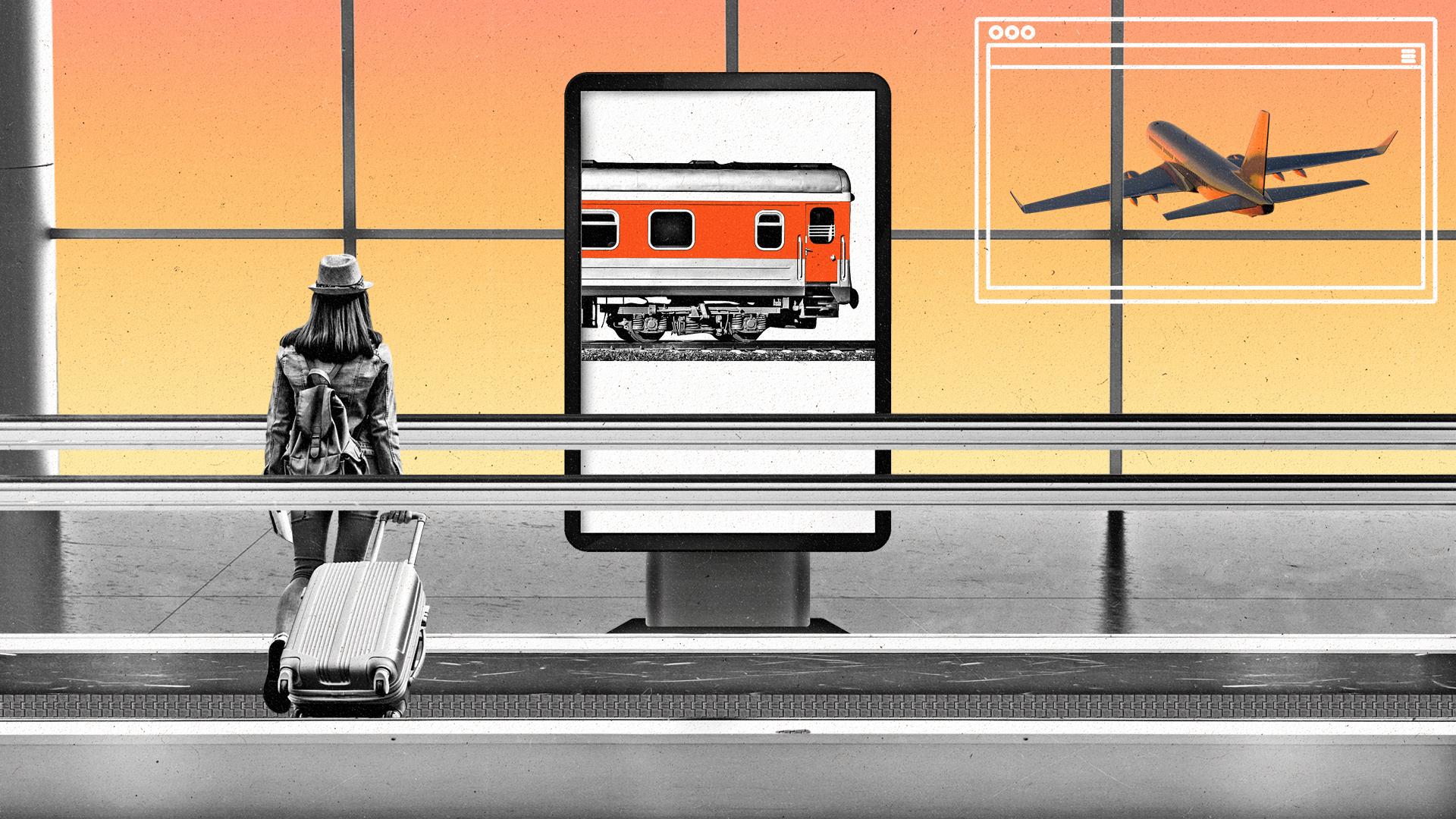Travel is back. For marketers, it’s never been more important to prove return on investment.
‘A higher level of scrutiny’: Marketers are looking towards digital channels like CTV and DOOH for measurement and awareness plays.

Eyeing that trip to the Caribbean? You’re not the only one. As pandemic restrictions ease, travel is once again becoming a popular pastime. After so much time at home, “revenge travel” is on the minds of many Americans. In fact, nearly nine out of 10 Americans (85 percent) are expecting to travel this summer, according to the U.S. Travel Association.
That’s a good thing for marketers in the travel space—from tourism boards to airline carriers, and everyone in between. After all, the travel and tourism industry took a massive hit during the pandemic — travel ad spend in the U.S. dropped from $18 billion in 2019 to $9.7 billion in 2020, according to Zenith — and further pressures like the Great Resignation, the war in Ukraine, inflation, and the threat of a new Covid variant have only added layers of concern to an already fraught industry. Zenith predicts that it will take until 2023 for travel ad spend to overtake 2019 levels.
As masks disappear and the use of hand sanitizer becomes a faint memory, travel-focused brands and agencies are looking to make every dollar of their marketing budgets count toward consumer retention and performance accountability. This makes digital channels like connected TV (CTV), digital out of home (DOOH), display, native, social, and streaming audio particularly important since they offer more robust measurement opportunities, Fletcher Whitwell, chief media and publishing officer at Las Vegas-based ad agency R&R Partners, which works with clients like the Las Vegas Convention and Visitors Authority, Allegiant Air, Discover Puerto Rico, and the Las Vegas Raiders, tells The Current.
“Budgets are beginning to bounce back and, in some cases, are reflective of pre-pandemic times,” he says. “But refreshed budgets come with a higher level of scrutiny than in pre-pandemic times. Brands have an eye toward return on investment and want to ensure that their marketing dollars impact consumers’ intent.”
Shifting habits
Whitwell points to several reasons for travel brands shifting their marketing budgets to digital channels: Consumers spend more time online for both work and play; the rise of travel apps; the need for online vaccine passports; and an increase in digital concierge services.
Fortunately for marketers, digital environments offer better measurement capabilities and cross-channel reporting, something Whitwell says is critical with brands’ increased emphasis on ROI. Whitwell is especially bullish on using demand-side platforms and mixing CTV with linear to maximize return on ad spend and incremental reach. Digital media already accounts for more than half of R&R clients’ marketing plans, with CTV and video accounting for one-third, he says.
“Given the rise and importance of video consumption, fueled in some part by the pandemic, CTV will continue to grow its share and value as a part of the media mix,” says Whitwell, adding: “We also love data and attribution to fuel our plans, and we’ve seen that by utilizing a DSP, we can move and track a consumer through their journey highly successfully. We can connect online and offline plans more effectively through techniques like ACR targeting.”
R&R’s ongoing campaign for the Las Vegas Convention and Visitors Authority called “Greatest Arena on Earth,” uses a mix of CTV, linear, online video, and content partnerships to highlight how Vegas has become an international live sports destination, aside from its other attractions.
Less ‘safety,’ more excitement
With state and federal mandates lifting and more advancements in vaccines, marketing campaigns promoting travel can relax on the Covid-heavy safety messaging that has been necessary during the past two years, and instead bring back the fun of travel in their campaigns.
Alaska Airlines, which went viral for its “Alaska Safety Dance” video — in which employees remake the Men Without Hats’ 1982 new wave classic — is now less focused on convincing hesitant travelers, and is instead pivoting toward what Lisa Zakroff, managing director of Mekanism Seattle, the agency of record for Alaska Airlines, calls “displaying confidence in Alaska Airlines’ brand.”
“Right now, government entities are doing a lot of the safety messaging for us, by lifting mandates and encouraging people to go back to life as we knew it,” says Zakroff. “As such, we’re focused more on brand messaging and encouraging flyers to fly with the airline who puts care first.”
Alaska’s new “The Care Coalition” campaign, created with Mekanism, is its largest campaign by spend in recent years. It stars Queer Eye’s Tan France and “the most caring icons in the universe”: TikTok star Nick Cho (@YourKoreanDad), a snuggie, a grandma, a Care Bear, Mother Nature, and a dog. All are trying to decide whether Alaska Airlines should join their ranks as the “most caring airline.”
The campaign is meant to drive brand awareness, and like many travel brands, Alaska is leveraging a mix of CTV, broadcast, online video, and social to “reflect ever-evolving consumer video consumption behaviors,” says Zakroff.
The comedic, light campaign is buoyed with another strategy to attract travelers who might have more freedom to travel due to new remote workplaces or need to travel for business. Last month, Alaska became the first major airline to introduce a subscription program called “Flight Pass” with plans starting at $49 a month. Of course, subscriptions can also help garner first-party data and keep a continuous relationship with consumers, and something smaller airlines have been experimenting with. “It was actually concepted early in the pandemic, but feels even more relevant today, now that flyers can envision themselves flying consistently throughout the year,” says Zakroff.
Subscribe to The Current
Each week, The Current gives you a rundown of the biggest stories and latest trends from the world of data-driven marketing, including topics like Connected TV and the future of identity — all delivered directly to your inbox.
Form not loading? Click here to get in touch.